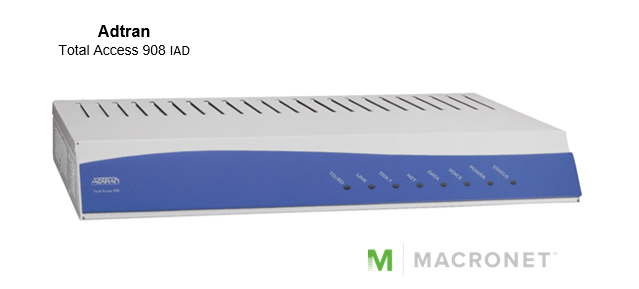Telephony The Ultimate Guide for 2022
A lot has certainly changed in the 145 years since Alexander Graham Bell successfully completed the first two-way long distance telephone conversation with Thomas Watson. The call was made between Cambridge, MA and Boston over a two mile stretch of wire. AT&T ultimately bought Bell’s phone company in 1899 and over 100 years of copper-based telephony systems would dominate telephony. In Telephony: The Ultimate Guide for 2021, we will look at a snapshot of current trends in telephony for business users of all sizes.

The largest global enterprise IT organizations face similar challenges to the very small business when determining how to find the best telephony solutions for their users. Most large enterprises have users in offices of varying sizes around the world and need to source network access options to achieve connectivity to the internet for data and VoIP services. Yet still, in many locations, the internet service is not available, outside of budget, or is poor quality, and IT decision makers need to look at alternatives to solve for telephony needs. We will discuss the following 6 telephony related services:
- POTs lines
- T1 TDM Service
- SIP Trunking
- UCaaS
- CCaaS
- MS Teams Voice
POTS Lines
POTs lines, or Plain Old Telephone Service, is the retronym for a telephony service that delivers voice-grade telephony over 24 or 19-gauge copper wire at 99.999% availability to the PSTN (Public Switched Telephone Network). In addition to voice calling, POTS lines have been used for basic telemetry services such as:
- Fax T.32
- Point of Sale (POS) systems
- Alarm Systems
- ATM machines
- SCADA applications
- Elevator monitoring
- Call Boxes
These legacy copper systems also serve as an access method for data services such as DSL (Digital Subscriber Line) and are still in heavy use today across the United States and around the globe. Removal of copper systems and migration to all fiber or wireless networks will still take many years. Further, many of the devices that they serve still require an analog connection. In this case, a converter can be used to convert the analog signal to data for services such as POTs over Cellular, POTs over WAN, and POTs over WiFi, which enable businesses to extend the life of their analog devices.
T1 Voice Service
Traditional TDM (Time Division Multiplexing) voice service is a legacy service that delivers 1.536 Mbps of data at the T1 (aka DS1). Up to 24 simultaneous telephone calls can be delivered on a T1 and often delivered as PRI (Primary Rate Interface) for PBX phone systems.
Since the cost of delivering Ethernet local access has dropped substantially, many carriers are leading with 5Mbps or 10Mbps Ethernet Local Access loops provisioned for Dedicated Internet Access and installing an IAD (Integrated Access Device). The IAD solution allows the business user to take advantage of the available internet bandwidth to provide both voice and internet service over the same loop. The IAD can then hand-off legacy voice services to their PBX without making an investment in VoIP (Voice over Internet Protocol) equipment.
The IAD solution can also provide for Quality of Service for the voice calls to ensure that voice packets retain priority over other types of traffic to ensure clear voice calls. A general rule is to assume that voice calls will use 100Kbps of bandwidth using the G.711 VoIP codec.

SIP Trunking
Session Initiation Protocol (SIP) is a voice service that is now offered by most carriers who provide voice services. SIP sessions are delivered over data network services to the customer’s IP enabled phone system. SIP is a highly efficient delivery method for telephony services since the voice calls use virtual phone lines upon which voice is separated into packets, sent across the data network, and are delivered to the customer’s SIP endpoints.
Each SIP Tunk can be provisioned with a many voice channels that equate to the maximum number of concurrent call sessions for which the business wants to subscribe. Carrier plans often allow for “Pooling” of voice channels across multiple locations, allowing for the maximum cost efficiency since you no longer will need to subscribe to fixed channels on a per-location basis.
SIP service providers have expanded their ability to originate and terminate traffic in countries around the world, however, it is important to fully understand the carrier presence and capabilities on a per-country basis to ensure that you are able to gain the full functionality that your users demand in each geography.
Further, service providers have been investing heavily in improving their delivery systems to allow users to easily manage voice services through a dedicated customer portal. Adding lines, porting service between providers, analyzing traffic, billing, and customer service are greatly simplified with SIP service in conjunction with portal functionality. It is critical during the sourcing process to demo the carrier portal to ensure that the portal provides for ease of use and the optimal customer experience.
UCaaS – Unified Communications as a Service
Unified Communications as a Service is a cloud-based voice service category that emerged in 2014 to provider cloud-based delivery of voice and collaboration capabilities to business on a single platform. UCaaS has enabled business to quickly deploy voice and collaboration solutions quickly and in an op-ex model. In general, UCaaS solutions include the following:
- Voice Telephony
- Audio and Video Conferencing
- Messaging
- Presence
- Administrative Portal
UCaaS gained quick adoption in the small and medium business space as decision makers saw value in the cloud-based solution that is simple to deploy and administer. Convergence of the telephony and conferencing components into a single solution have been key drivers. According to this Report, the global market size for UCaaS will grow to $24B by 2024 as larger enterprises adopt UCaaS and leading service providers expand their service offerings to more markets around the globe.
Executives are also quickly seeing the value of UCaaS and are investing in Integrating UCaaS and Audio Visual to ensure that their employees have best possible Collaboration Solutions and seamless collaboration spaces while working both at home and in their corporate office spaces.
The changing workforce model is enabling employers to identify and hire great talent, wherever they may live and decide to work. Integrating UCaaS and CCaaS (Contact Center as a Service) is the latest trend. No longer do contact centers workers need to drive to a call center and sit in a cube now that cloud-based contact center solutions can be quickly and easily deployed.
CCaaS – Contact Center as a Service
As mentioned above, the virtual call center includes many of the same value features as UCaaS and incorporates highly advanced functions designed to optimize the customer experience. Launching a call center used to be incredibly capital intensive and complex. Leading CCaaS (Contact Center as a Service) providers in the Macronet portfolio now include many of the advanced features that used to be only affordable to the very largest of call centers. A few of the typical types of virtual call centers include:
- Inbound – ACD, IVR, CTI
- Outbound – Predictive Dialer, Power Dialer, Progressive Dialer
- Omnichannel – Integration of Social, Mobile, email, Chat
- Blended
Similar to the market development of UCaaS, CCaaS was quickly adopted my SMBs and is now widely adopted by large enterprises as the CCaaS service providers have expanded their global presence and enhanced their cloud-based offerings to include the features often deployed by the largest contact center services fortune 1000 businesses.

MS Teams Voice
Microsoft has successfully positioned Office 365 as a market leading suite of business applications, including the Microsoft Teams collaboration tool. According to Microsoft, over 500,000 organizations as using MS Teams as their default messaging platform.
Microsoft does offer calling plans for MS Teams to enable telephony. Microsoft, however, is a software company and often the basic calling plan solution does not meet the needs of the business user depending on factor such as geography, need for analog phone lines, country specific emergency services, and integrations with other business applications, and numerous other factors.
Microsoft understands their limitations and has enabled MS Teams Voice Direct Routing to allow businesses to use Teams as the user interface, but to use other service providers as the “underlay” telephony platform. The telephony platform maybe an existing SIP trunk carrier or a UCaaS service provider.
Conclusion
Every business has varying needs for telephony and souring the right solution or mix of solutions can be a challenging task. The team at Macronet Services has the experience and talent to help analyze your current inventory and identify solutions for your business on a global scale. Our portfolio of suppliers includes all the leading vendors, and we will assist your team on developing a strategy to optimize your telephony environment and to act on the strategy over the long run. In addition to telephony and network services, our team is adept at managing the transition to new solutions and can assist with managing disconnects, billing disputes, contractual concerns and Telecom Expense Management solutions that can greatly simplify all aspects of managing network inventory and billing. Reach out to us to have a conversation about how we can help.
Related Posts
2 Comments
Comments are closed.
Recent Posts
- Telecom Expense Management (TEM): The Definitive Guide for Mid-Large Enterprises
- Designing Secure and Compliant Networks in China: The Definitive Guide for Global Enterprises
- Securing Autonomous AI Agents: Identity-Anchored Autonomy for Enterprise Risk & Resilience
- The Definitive Guide to Enterprise Telecom Agreements: MSA, SLA, and DIA Negotiation Best Practices for Global Carriers
- The AI Privacy Engineer: Architecting Trust and Compliance in the Age of AI
Archives
- December 2025
- October 2025
- September 2025
- August 2025
- July 2025
- June 2025
- May 2025
- April 2025
- March 2025
- February 2025
- January 2025
- December 2024
- November 2024
- October 2024
- September 2024
- August 2024
- July 2024
- June 2024
- May 2024
- April 2024
- March 2024
- February 2024
- January 2024
- December 2023
- November 2023
- October 2023
- September 2023
- August 2023
- July 2023
- June 2023
- May 2023
- April 2023
- March 2023
- February 2023
- January 2023
- December 2022
- November 2022
- October 2022
- September 2022
- August 2022
- July 2022
- June 2022
- May 2022
- April 2022
- March 2022
- February 2022
- January 2022
- December 2021
- November 2021
- October 2021
- September 2021
- August 2021
- July 2021
- June 2021
- May 2021
- April 2021
- March 2021
- December 2020
- September 2020
- August 2020
- July 2020
- June 2020
Categories
- Clients (12)
- Telecom Expense Management (1)
- Satellite (1)
- Artificial Intelligence (9)
- Travel (1)
- Sports (1)
- Music (1)
- News (281)
- Design (4)
- Uncategorized (1)
- All (19)
- Tips & tricks (25)
- Inspiration (9)
- Client story (1)
- Unified Communications (196)
- Wide Area Network (309)
- Cloud SaaS (60)
- Security Services (71)





[…] and with ease. This means that if you’re conferencing spaces are still dedicated for teleconferencing, then you need to change that now. You can’t wait any longer to make the investment in your […]
[…] to the passing of the Telecommunications Act of 1996, the copper telecommunications infrastructure across the country was a monopoly held by the […]